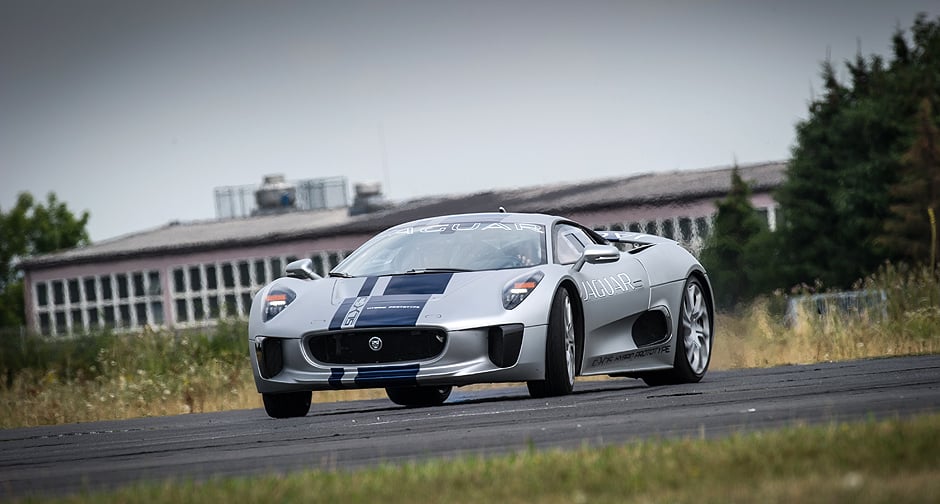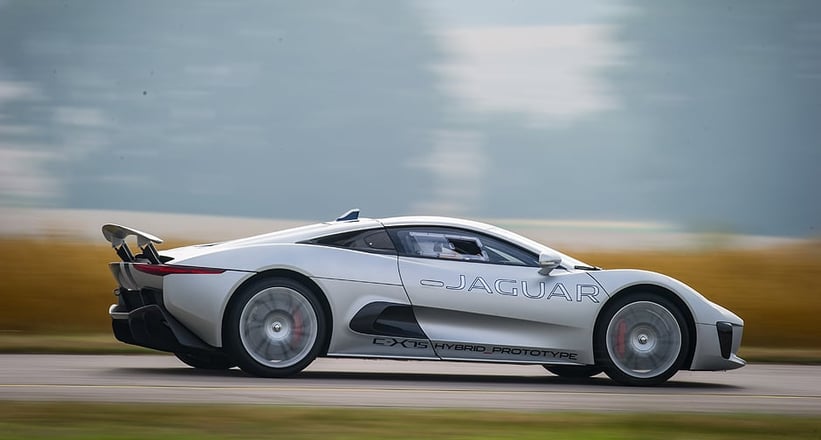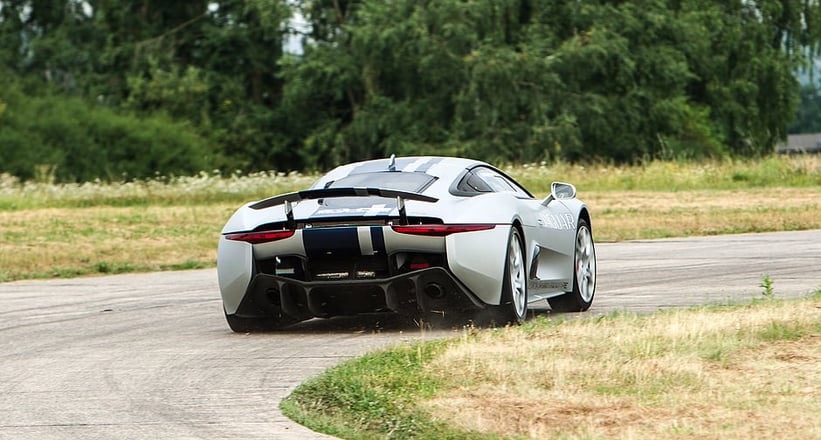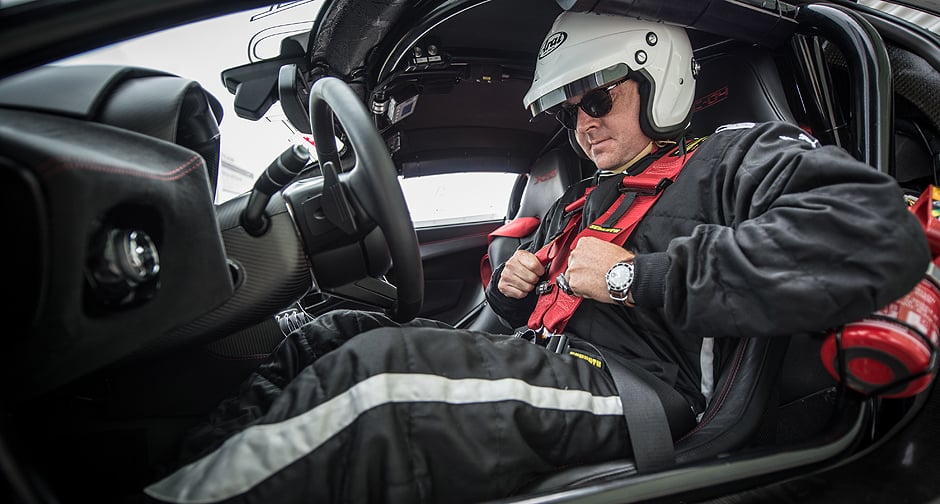Remember the C-X75, which Jaguar unveiled in 2010? An expressive vision of a hybrid supercar – with micro gas turbines to recharge the batteries, four electric motors (one for each wheel) and a stunning wow factor of a design. Designed as a concept car (‘C’) of a purely experimental nature (‘X’), proudly paying homage to the 75th anniversary (‘75’) of the marque from Coventry, the super-Jag disappeared after the celebrations, despite praise from pundits and press around the world. There was also the matter of the new Jaguar F-Type to demand everyone’s full attention. Originally intended for a small-series production run, in late 2012 Jaguar announced that due to global economic worries the C-X75 project would be cancelled.
But did the story end there? No – five prototypes were developed, to an engineering brief that sounds almost impossible. It went something like this: “Build a super-sportscar that looks as breathtaking as the C-X75.” Okay! “It needs to have the values and driving abilities of a Bugatti Veyron.” Er… right. “And it should have the fuel economy of a Toyota Prius.” Sorry, what?! “Oh, and an electric drive with the same range as the Chevrolet Volt.” Yes, of course – anything else you’d like, while we’re about it? “Yup. You need to have the project completed within a year. Off you go then, guys.”


To cut a long story short, a year later and the prototype Jaguar is here – and by all accounts, the car fulfils the brief. The first thing to hit you is the way this super-Jag looks: damn good – so that’s Challenge 1 dealt with. If you happened to have a tape measure, you’d find that the prototype has virtually the same dimensions as the concept car, differing only where the functionality requires it – air-intakes, headlights, mirrors, wheels, and so on. But what about performance? Well, with 862HP and 1,000Nm of torque, the C-X75 catapults to 62mph in around 3.0 seconds and can manage a top speed just shy of 220mph. Not too shabby, then.
And how about the Chevy Volt and the Toyota Prius? Incredible as it might seem, for economy and emissions this hypercar matches them. As Jaguar developed the car as a feasible ‘plug-in hybrid’, the gas turbines were discarded. The C-X75 you see here now has a Formula One-inspired, turbocharged and supercharged, 509HP 1.6-litre four-cylinder petrol engine. When combined with the twin electric motors (totalling 300kW) and high-performance batteries, massive combined power is matched by amazing efficiency. It is complex, and the whole system relies on very advanced electronics and engine management. Running on electric power alone, the car has a range of 60 kilometres (around 37 miles). From an efficiency viewpoint, the car’s consumption is 3.8l/100km with CO2 emissions of 89g/km. This, by itself, is spectacular – and we have not yet described the driving experience.

Inside the cockpit, the driver is met with some familiar Jaguar instrumentation and an F-Type steering wheel. It’s a little cramped and claustrophobic but no dark cave, even wearing the mandatory helmet, and I am sitting 8 inches from the Tarmac. In ‘E-mode’ the Jaguar rolls smartly away, then the engine kicks in and it really goes forward. It’s brutally quick, insanely fast. Using the paddle-shift I flick the seven-speed gearbox through the gears, always shifting up at 10,000rpm. Each time the engine pulls the car along faster and faster.
It seems almost in an instant that the speedo is showing 180mph. The end of the runway is hurtling towards me, so I get on the brakes. Fast. In braking, the C-X75 is as impressive as when accelerating. And don’t forget that it’s more than capable of breaking the 200mph mark – even, maybe, 220mph. And, as an engineering project, it’s only 50 per cent finished. Anyone who thinks the XJ220 supercar of the 1990s was Jaguar’s final effort to join the ranks of the hypercar makers is mistaken. The C-X75 beats it, hands down. Porsche, Ferrari and McLaren, watch out. If this Jaguar hypercar goes into production, it won’t be just the makers of super-economical hybrids that have serious competition on their hands.
Photos: Jaguar














